|
The History of the Doctor gathers together reviews of almost every full-length Doctor Who story and presents them from the Doctor’s unique chronological perspective. Stories can be scrolled through in order, beginning with the pre-television series novella Frayed, and ending with A Good Man Goes to War. Beyond the odd notable exception such as the anniversary year’s Beyond History’s End series of reviews, there are currently no plans to include any stories broadcast or released after July 2011.
Where the Doctor’s
adventures intersect with one of the spin-off series that we cover, if you’re scrolling
through them in order you can branch out into that spin-off at the point
where they converge. And so, for instance, if you’re
viewing the entry for the Doctor Who episode Journey’s End,
you can either continue to scroll through the Doctor’s personal timeline, or
you can branch off and see what happened next from Captain Jack’s
perspective, or Sarah Jane’s.
The site can be navigated by selecting a ‘timeline’, and from there clicking on a story’s image. We have elected to use images (lifted from CD / DVD covers, screen grabs and promotional posters) as opposed to listing story titles as not everybody knows the name of the story that they’re looking for, and - more importantly - we just think that it looks cool. Story titles can still be seen, however, simply by hovering your mouse over a story’s image or by selecting the button pictured to the right (for the first and second Doctors only, at present). You can also use the search function on the site’s homepage.
In deciding what fits where, we try to look at the Doctor’s life in the sort of way that a historian or a biographer might. A surprisingly large amount of the source material fits together effortlessly, but (and it’s a big ‘but’) some of it is conflicting. With very few exceptions (such as The Curse of Fatal Death and Death Comes to Time, which were never intended to form part of mainstream continuity) we have made no judgement calls whatsoever as to what is ‘canon’ and what is apocryphal. Most full-length Doctor Who stories are included here in some shape or form, and it’s up to you whether you think that they ‘count’ or not. Short stories generally aren’t covered simply because it would be a logistical nightmare for us to include them, and besides, there’s enough full-length Who out there to keep us all busy enough!
Naturally, we did have to wield a fair bit of discretion in deciding which story fits where, and not everybody is going to agree with our thinking. Generally we try to adhere to the placements suggested by authors or in a story’s blurb, but given the sheer wealth of stories out there, this isn’t always possible if we want things to fit. In respect of stories that don’t have an immediately obvious placement, our working out is shown in our ‘Continuity Corners’ (which can be found at the bottom of the relevant pages), which we also use to detail any continuity titbits that we feel may be of interest to readers.
Now we’re not for a moment contending that the Doctor’s life makes perfect sense; he’s a time traveller for heaven’s sake. Discontinuity comes with the territory. All the same, it should at least be noted that over the years Doctor Who fans (and indeed Doctor Who writers) have put forward some compelling theories to explain away the discontinuities in the series.
“I read about something that has just happened. The next page says it didn’t happen at all Over the page says it did happen, but ‘many years ago’!” – The Keeper of Traken by Johnny Byrne
In the Big Finish audio drama Zagreus, for instance, it is posited that there are an infinite number of quantum realities out there, each with their own unique version of the Doctor, and so anything that doesn’t quite fit with the established canon can be pigeon-holed as having happened to a ‘parallel’ Doctor. We’re not fans of this theory, principally because “a man is the sum of his memories. A Time Lord even more so,” and having those memories carved up across quanta seems to dilute the essence of the character. However, this theory is useful in explaining away ‘nth Doctor’ stories like Scream of the Shalka and the two Peter Cushing Dalek movies, which are almost universally considered to have taken place in alternative quantum realities.
“What if the “real” timeline is like a musical score, with infinite ornamentations possible? There can’t be a perfectly correct performance of a score, because a score is a guide, not a definition. It opens possibilities rather than closing them off. Why shouldn’t time be like music?” – Camera Obscura by Lloyd Rose
Others blame any inconsistencies on the Time Wars and the Doctor’s a-linear lifestyle. Each and every one of the Doctor’s actions affects the future – the future, at least, in relation to when he is when he acts. This is probably why the Time Lords had Laws to prevent them from meddling in their own past - too many headaches! And don’t even get me started on the ramifications of Faction Paradox and their biodata meddling. Trust Doctor Who to take something like discontinuity and actually forge a fascinating story arc out of it!
“But he was still there. Even without a fixed face or name or body, even if his past contradicted itself from moment to moment, that didn’t matter. There was still something there, not just unpinned-down but impossible to pin down. Something that even revelled in the fact that he couldn’t be easily understood. That said more things were possible than a simple explanation would allow.” – Unnatural History by Jonathan Blum and Kate Orman
The reviews themselves aren’t high-brow critiques, nor are they the detached and sensationalist summaries that you’ll read in the papers – they’re written by fans and for fans; from an enthusiastic, passionate, and more often than not shamelessly-biased point of view, hence our cheesy tagline…
The following is gathered with reference to spin-off novels and audio dramas as well as the television series itself up until July 2011. Much of it is therefore open to interpretation, as many people only consider televised episodes to be primary source material, or ‘canon’. It should also be noted that most of what we know about ancient Gallifrey and the Doctor’s past has only been hinted at, rather than explicitly stated, in an attempt to maintain a certain mystique, though recent episodes have revealed perhaps more than would have been desirable.
Who is the Doctor? Even after nearly fifty years’ worth of adventures, very little is actually known about the Doctor. All that we can be sure of is that he is traveller in time and space. A traveller who helps people.
Above: “Don’t mess with me, sweetheart.”
What is the Doctor’s name? The Doctor’s name contains thirty-eight syllables and is apparently ‘unpronounceable’ by most species. The Doctor is reported to have abandoned his name when he fled his homeworld whilst in his first incarnation.
“…before he left home, he broke his name. Broke it into thirty-eight tiny pieces… He swept up all the pieces of who he was and tucked them away in an inside pocket. And over the years, as he met people who ended up sharing the road with him, travelling with him for a while, he would quietly give each of them a piece of his name… with all the jigsaw pieces of his name scattered about, they wouldn’t be able to get all of him when they came to take him away.” – Return of the Living Dad by Kate Orman
How old is the Doctor? The Doctor of the revised television series would have us believe that he is 900 years old or thereabouts. However, we suspect that this is a lie; the Doctor’s real age must be considerably north of the millennium mark, something which – particularly in light of the comparatively youthful company that he keeps – he may be rather self-conscious about (a theory supported by the Doctor’s testiness when grilled on the subject by Romana in The Ribos Operation).
Another possibility is that the Doctor genuinely doesn’t actually know how old his is – after all, how on earth would you keep track of your age when living your life in such an a-linear manner? The 2009 Big Finish audio drama Orbis certainly lends this hypothesis credence:
“And to be honest, I lost track of how old I really was aeons ago. I tend to round it down a bit, making a few adjustments for variations in year length across the cosmos. I could be four hundred years old, seven hundred, nine hundred; or in some parts of a particularly obscure galaxy, I’d be just… er… two.” – Orbis by Alan Barnes & Nicholas Briggs
That said, there does seem to be a fairly consistent increase in the Doctor’s age as given on screen, with or two major caveats. The second Doctor claimed that “in human terms” he was about 450 years old. By the time of the fourth Doctor story The Brain of Morbius, the Doctor was a curiously specific 749 years old. Two incarnations later, in Revelation of the Daleks, the Doctor reckoned himself to be 900 years old. By the time that the seventh Doctor had been introduced, this figure had risen to 953 and would pass the millennium mark before his next regeneration, the Doctor celebrating his milestone one-thousandth birthday in Kate Orman’s novel Set Piece. By fairly early on in the eighth Doctor’s life, the Doctor was claiming to be 1,012 years old, and this was before he spent 600 subjective years on the planet Orbis!
Above: “I’m the Doctor. I’m a Time Lord. I’m from the planet Gallifrey in the constellation of Kasterborous. I’m 903 years old and I’m the man who is gonna save your lives and all six billion people on the planet below.”
The first qualification to the above is the third Doctor’s near claim to having been a scientist for “several thousand” years (he doesn’t actually say “years” – he’s cut off mid-sentence). Some theorise that he was referring to ‘Gallifreyan years’, or perhaps even including years that he may have spent living as ‘the Other’ (see below), before he became the Doctor that we know. Given the third Doctor’s flair for pretension, he may even have been exaggerating to make a point.
The second is the Doctor’s age as given in the new television series. In Aliens of London, the Doctor claimed to be a nice, round 900 years old – a figure that he robustly stuck with until Voyage of the Damned, by which time he appeared to have aged in perfect unison with how long the series had been back on the air at the time. This figure has steadily increased since, with Matt Smith’s incarnation of the Doctor boasting an age of 907 years in the recent episode Flesh and Stone. If these claims are taken at face value, this means that David Tennant’s Doctor may have had the shortest innings of any of any incarnation by a long, long way.
Is the Doctor half-human? The TV Movie says he is! The Doctor has a human bellybutton and other genetic anomalies in his DNA. It has been suggested that the Other (see below) was a human being from Victorian times who somehow ended up stranded in the Old Time on Gallifrey. If this is indeed the case, then this could explain both the Doctor’s anomalous genetics as well as the human mother referred to in both the TV Movie and The Infinity Doctors. It would also go some way towards explaining the Doctor’s unlikely fondness for Earth and humans.
Another explanation is that the Doctor was a pure-blood Time Lord until his biodata was tampered with in Unnatural History, and he was made - retroactively - half-human.
Does the Doctor have any children? Yes. The Doctor has a daughter, Jenny, who was grown in a progenerative chamber (similar to those once used by the Time Lords) on the planet Messaline in the episode The Doctor’s Daughter.
Above: Jenny, the Doctor’s daughter
However, Jenny is not the Doctor’s only child. The Doctor of the new television series has referred to his other children on more than one occasion, suggesting that they are all long-since dead, perhaps even casualties of the Time War. Little else is known about the identity of these children, however it is known that the Other was married to a woman who bore him thirteen children.
Above: Susan “Foreman,” the Doctor’s granddaughter
One of these thirteen children had a daughter, who we all know as Susan Foreman. “Susan” was the last child to be born on Gallifrey prior to the Pythia’s curse, and would go on to become the Doctor’s first travelling companion.
How did the Gallifreyans become Time Lords? The Time Lords prospered around ten billion years after Event One, the creation of the universe. Gallifrey may have been one of the first – if not the first – world in our universe to spawn life, and the ancient Gallifreyans lived their lives much as we live ours today, reproducing in much the same way that we do.
Above: The High Council of Time Lords at the apex of the Last Great Time War
The oppressive Pythia ruled the Gallifreyans until a young insurgent by the name of Rassilon led an uprising. During what historians refer to as the “Time of Chaos”, Rassilon exiled the Pythia and her followers to the nearby planet of Karn, where their sisterhood would endure for millennia before eventually being evicted by the Zarodnix Corporation. When the Pythia was forced to leave Gallifrey she cursed the Gallifreyans, leaving them a barren race.
“By Presidential decree, only the Loom-born shall inherit the legacy of Rassilon. There shall be no more children born of woman.” – Cold Fusion by Lance Parkin
The ensuing “Intuitive Revelation” saw a triumvirate rise to power and rule over ancient Gallifrey, comprised of Rassilon; Palix (who would eventually become known as “Omega”); and another whose name history has forgotten, and has thus been dubbed “The Other”.
Above: Rassilon’s final incarnation
A brilliant geneticist, Rassilon devised a way for the Gallifreyans to once again propagate their species following the Pythia’s curse. He constructed progenerative chambers (“looms”) in which future generations could be genetically woven. Each House on Gallifrey was allocated one loom, and each loom was permitted to have a maximum of forty-five “cousins” in existence at any given time. Simultaneously, Rassilon introduced the concept of “regeneration” for the Time Lord elite, enabling those who became Time Lords to regenerate twelve times and live for millennia. Upon their first regeneration, a Time Lord would grow a second heart, restoring the uniquely Gallifreyan physiognomy that the Pythia’s curse had robbed them of.
Meanwhile, Omega began to conduct experiments into time travel. “Chronauts” were sent into time whilst Omega created remote stellar manipulators - the Hands of Omega - which enabled him to harness the colossal energies of a black hole, creating a power source (the Eye of Harmony) that would ensure the Gallifreyans’ hegemony over time. Regrettably Omega was lost in his final experiment and given up for dead by his people. He would not be found until the events of The Three Doctors, eons later, which revealed that his experiments had trapped him within a universe of anti-matter.
Above: Gallifrey shortly after the Intuitive Revelation
Drunk on the power afforded to him to by the success of Omega’s experiments, Rassilon founded the High Council of Time Lords to rule over the “ordinals” (non-Time Lord Gallifreyans) with every bit as much cruelty as the Pythia did. Those who either did not wish or were not allowed to live with the Time Lords in their Citadel were banished to live in the outer world, where they lived either as “Shabogans” (savages) in the wilderness or as denizens of the Low Town.
The first Time Lords used their Eye of Harmony to anchor the continuity of the universe and ensure their hegemony. A great transduction barrier was erected around the whole planet, protecting Gallifrey from both physical and temporal incursions.
With Omega out of the way, Rassilon continued to grow ever more powerful until he eventually became absolutely corrupt. It is said that in the early Time Wars he erased entire civilisations from time that had yet to develop (such as the Divergence, who would return in Zagreus) for fear that they might eventually pose a threat to Gallifrey. Those that had already developed and were classified as threats, like the misunderstood Great Vampires of E-Space, Rassilon waged more conventional war against. It is rumoured that some of Rassilon’s fellow Time Lords rebelled against his cruelty.
Above: The Citadel of the Time Lords
By this point the Other no longer wished to serve Rassilon, and so as Rassilon put the rebels that opposed him to the sword, the Other kissed his wife and his granddaughter goodbye and then cast himself into one of Rassilon’s earliest progenerative chambers to be reborn long after the tyrant had fallen from power.
Just before leaving our universe on a mission of the utmost import, Rassilon made certain that he went down in history as a legend whilst the Other was demonised. History tells us that the Other stole away one of the Hands of Omega and - in contravention of the law protecting the preteritive time of Gallifrey - took it with him into the forbidden past, jeopardising the entire history of the Time Lords and risking the wrath of the Guardians and Gods. Every year on Otherstide, Gallifrey would celebrate the day the Other went away, taking both ancient superstition and the old ways with him.
Do the Time Lords have religion or Gods? After the fall of the Pythia, many Gallifreyans chose to worship six Godlike beings - Time, Life, Death, Fate, Pain, and Hope. Unlike the deities of many faiths, the existence of these Gods was proven fact and was not questioned even by those on Gallifrey who did not worship them.
It said that when the Last Great Time War began, the Gallifreyan Gods, together with other higher beings (such as the Eternals and Chronovores), left our universe and returned to their hallowed halls outside of space and time in Calabi-Yau space.
What do we know about the Doctor’s past? Did he have a family? The Doctor was loomed one fateful Otherstide Eve in the House of Lungbarrow, somewhere in Gallifrey’s Southern Mountain Ranges.
Above: Inside the cavernous House of Lungbarrow
In his formative “brain-buffing years” (childhood), the Doctor did not get along with his family. A lonely and depressed youth, the Doctor was bullied by many of his cousins, who would call him names like “Wormhole” and “Snail” which reflected the fact that he had been loomed with a redundant appendage - a human belly button. The Doctor’s cousins took this to mean that the Doctor was born naturally prior to his looming, and had subsequently undergone genetic weaving to “infiltrate” their family for his own (presumably nefarious) ends.
Above: The fourth Doctor in his Prydonian attire
Nevertheless, the Doctor was quite close to an old hermit who would often give him counsel, as well as his “father”, Quences. Quences wanted his favourite son to go into politics, and so at the age of eight the Doctor was sent to the Academy and eventually became a Time Lord in the illustrious Prydonian Chapter.
How did the Doctor and the Master first meet? At the Time Lord Academy, a young man named Koschei befriended the Doctor, who at this time went by the nickname “Theta Sigma”. Both became members of an elite group of ten students - the Deca - which also included the Rani, the “Meddling Monk” Mortimus, and future Celestial Intervention Agency Co-ordinator Vansell.
As part of their Academy initiation ceremony, both the Doctor and Koschei were made to look into the Untempered Schism, a gap in space and time where they could each view the Time Vortex directly. The experience had a profound effect on each, instilling within the Doctor an irresistible urge to flee his homeworld and to explore the universe, as well as sewing the seeds of madness within Koschei. Koschei would later claim that after looking in to the Untempered Schism, his every waking thought had been accompanied by the sound of drums.
Above: A quorum of Time Lords prepare to introduce young Koschei to the Untempered Schism
For many years, Koschei and the Doctor were inseparable. Unfortunately though, even when spending his time with Koschei, the Doctor could not escape his bullies. A young man from another house, Torvik, used to make it his business to make the Doctor’s life a living hell. One night, “sick with anger”, the Doctor killed Torvik in an act of self-defence. However, rather than admit to his crime, with the help of Koschei, the Doctor covered it up. That very night, the Gallifreyan Goddess of Death visited the Doctor to claim him as her champion. The Doctor begged and pleaded with Death not to take him and, when given the choice, he told her to take Koschei instead. Eventually Koschei would become the Master.
It is unclear how much the Untempered Schism and Death each contributed to Koschei’s fall from grace, if indeed either did at all. There is strong evidence to suggest that Koschei was simply seduced by a lust for power and dominion, however we believe that Koschei’s need to control was borne out of his fear of the universe (as seen through the Untempered Schism) and also his much more primal fear of death (which was, no doubt, exacerbated by Death’s exceptional hold over him). The events depicted in the novel The Dark Path were simply the final straw for Koschei, as it were.
How did the Doctor leave Gallifrey? After Quences’ murder, the Doctor stole an antiquated Type 40 Time Capsule (his TARDIS) with the intention of fleeing Gallifrey forever. Desperate to escape the clutches of his people, the Doctor took refuge in the one place that they wouldn’t ever look: the forbidden past.
“Nonsense, child. Grandfather indeed! I’ve never seen you before in my life.” – Lungbarrow by Marc Platt
Using his inimitable talents, the Doctor circumvented Gallifrey’s transduction barriers and Time Locks and broke the Time Lords’ most cardinal law, travelling into Gallifrey’s relative past.
Above: The Doctor steals the TARDIS…
The Doctor found himself in the Old Time, just after the Intuitive Revelation. There he encountered a young woman (who we all know as “Susan Foreman”) who instantly took him to be her grandfather, the Other. The Doctor also found that, for reasons that he could not explain, the Hand of Omega bound itself to him. And so with this young woman and the Hand of Omega on board his stolen TARDIS, the Doctor went on the run from his own people.
Is the Doctor ‘the Other’? Patience, Susan and even the Hand of Omega certainly believed him to be, and numerous Freudian slips made by the Doctor suggest not only that he is the Other, but also that he is aware of it (or at least suspect it).
Above: Faces of the mid-1970s Doctor Who production team, or faces of ‘Others...?’
Furthermore, in The Brain of Morbius, during the Doctor’s mind-bending contest with Morbius, we are shown the Doctor’s faces stretching back to before he was the first Doctor. Even Morbius, a Time Lord of thirteen lives, seemed shocked at just how far back the Doctor’s memories go and just how long he had lived at that point.
Nevertheless, the notion that the Doctor is a reincarnation of this mysterious Other is frowned upon by many and the matter continues to be debated.
How was Gallifrey destroyed? Gallifrey was originally destroyed in the eighth Doctor novel The Ancestor Cell by Peter Anghelides and Stephen Cole. However, following Doctor Who’s return to our television screens in 2005, BBC Books resiled from this, setting up the restoration of Gallifrey in the eighth Doctor’s final novel, The Gallifrey Chronicles, so that Russell T Davies could destroy the planet and its people again in his Last Great Time War, which took place some time prior to Rose.
Above: The Citadel of the Time Lords on the final day of the Last Great Time War
Gallifrey was ultimately destroyed in the Last Great Time War. Though the actual destruction of the planet has never been shown on screen, it was confirmed in The End of Time that it was the Doctor who destroyed the planet, along with (almost) every Dalek and Time Lord in existence. How he accomplished this is still a mystery - the closest that we have come to a clue at the time of writing is in Lance Parkin’s 2008 novel The Eyeless, which features a weapon of the type that is implied to have destroyed Gallifrey.
The End of Time further revealed that on the final day of the Time War, Gallifrey was able to break free of the war’s Time Lock and materialise above the planet Earth in 2010. The planet was ultimately sent back into the maelstrom of the Time War, however, to be destroyed by the Doctor.
If the Doctor misses his people and his planet so much, why doesn’t he just travel back in time and save Gallifrey from its destruction? For one, because he can’t:
“…it was impossible for the Time Lords to travel into their own future and they couldn’t change their own past. That was the fealty paid for their title.” – The Infinity Doctors by Lance Parkin
Access to Gallifrey’s relative past is forbidden by the Time Lords’ Laws of Time as well as “certain higher powers” (the Guardians and Gallifreyan Gods), and similarly its future could never be directly seen and thus avoided. After a certain date, TARDISes physically could not enter or scan Gallifreyan space.
“…for thirty thousand years, on a thousand planets, we [Time Lords] fought the Time Wars. The devastation would have destroyed the universe had it not been for the intervention of certain higher powers. Since that time, time has been stabilised. It is impossible to change Gallifrey’s past, or to know its future.” – The Infinity Doctors by Lance Parkin
The television episode The Stolen Earth also makes it explicit that the Last Great Time War was “Time Locked”, preventing any of its antagonists attempting to alter the outcome of the war after the event (at least in theory; both Dalek Caan and the entire planet Gallifrey were able to penetrate the Time Lock!) It is unclear who saw fit to set up this Time Lock, though we suspect that “higher powers” were responsible.
Above: The planet Gallifrey in orbit of Earth, just prior to its destruction
More importantly
though, the Doctor’s could never travel back and save his people from
destruction as the Time War had turned them into monsters that were every
bit as dangerous as the Daleks. As The End of Time documents, had the
Doctor not destroyed the Time Lords and their planet when he did, they would
have executed their “Final Sanction” and brought about the End of Time
itself, destroying the whole universe just so that they might ascend to
another plane of existence.
‘The History of the Doctor’ is Copyright © E.G. Wolverson 2006.
This site is non-profit making and is not in any way affiliated with the BBC. |
|
‘About the Site’ and ‘Frequently Asked Questions’ Copyright © E.G. Wolverson 2006 - 2011
E.G. Wolverson has asserted his right under the Copyright, Design and Patents Act 1988 to be identified as the author of this work. |


.jpg)


.jpg)
.jpg)
.jpg)
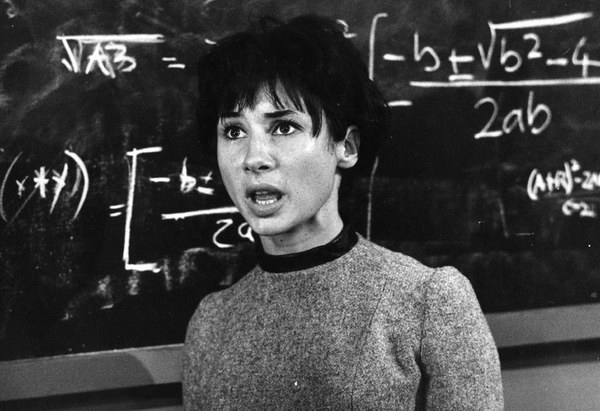
.jpg)
.jpg)
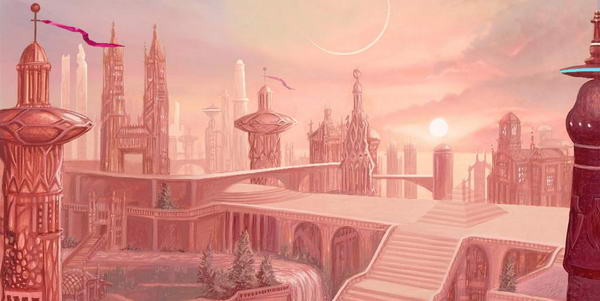
.jpg)

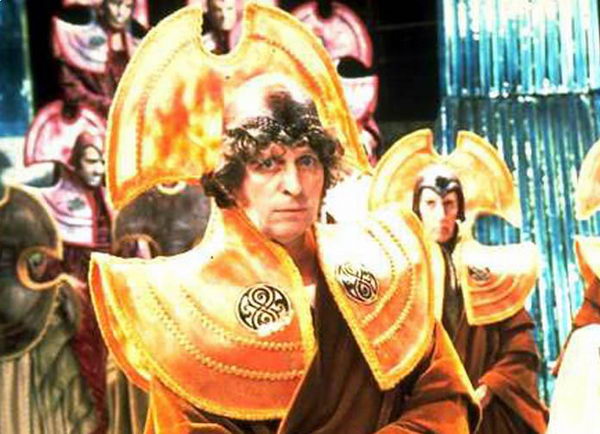
.jpg)
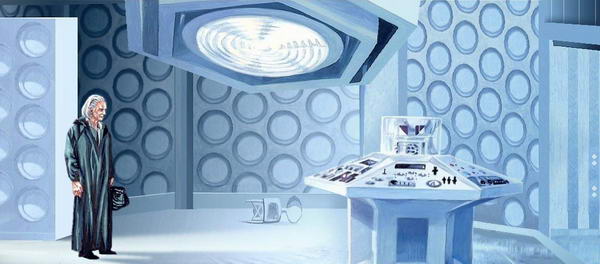
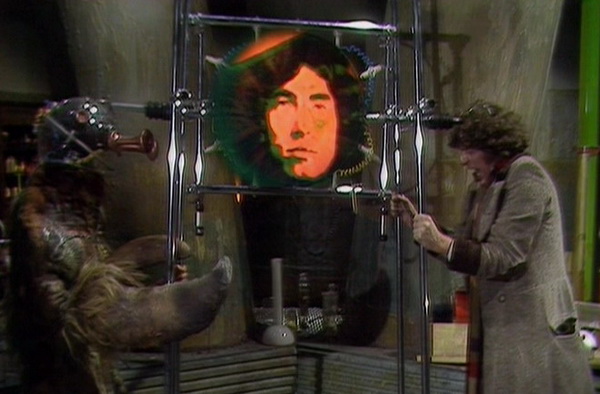
.jpg)
.jpg)